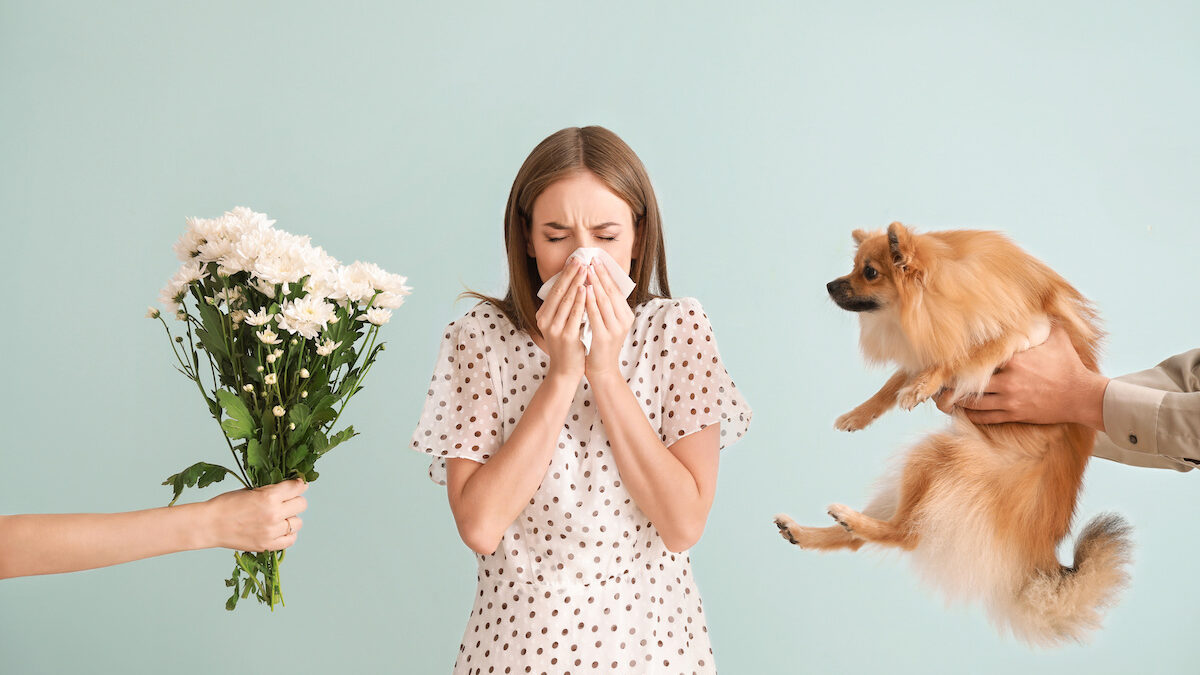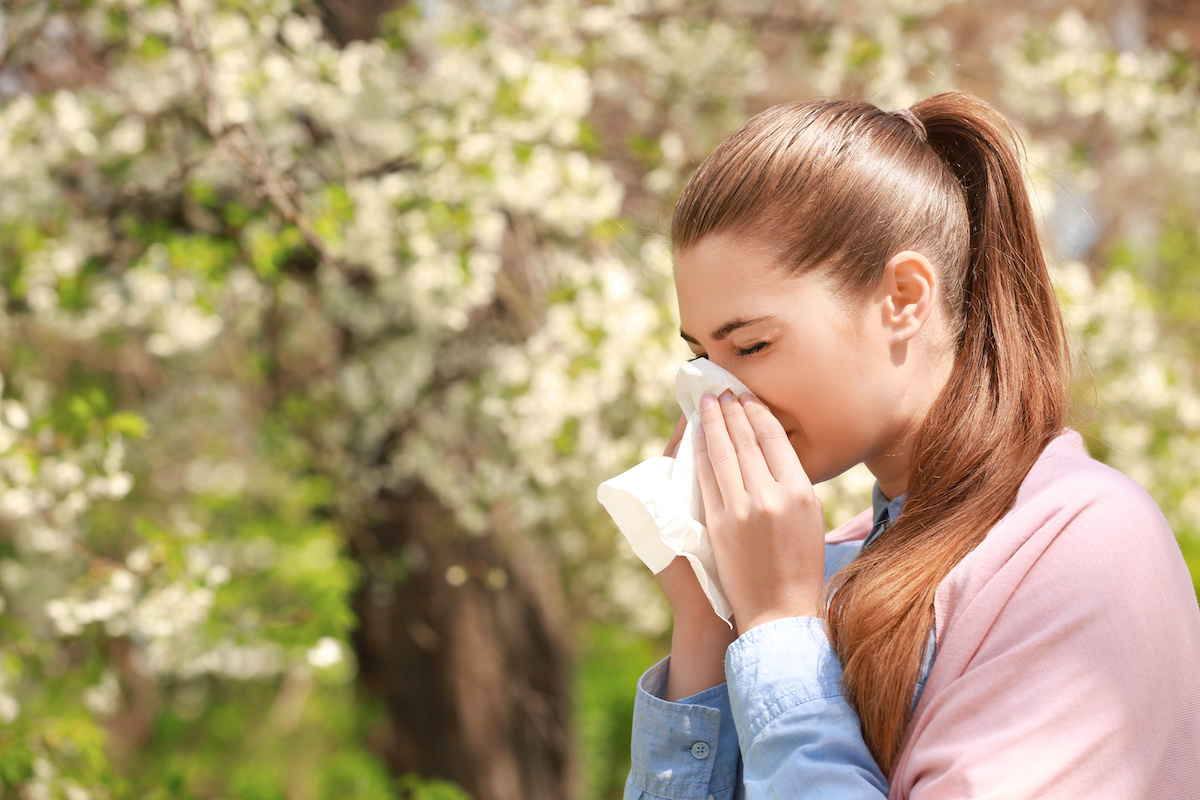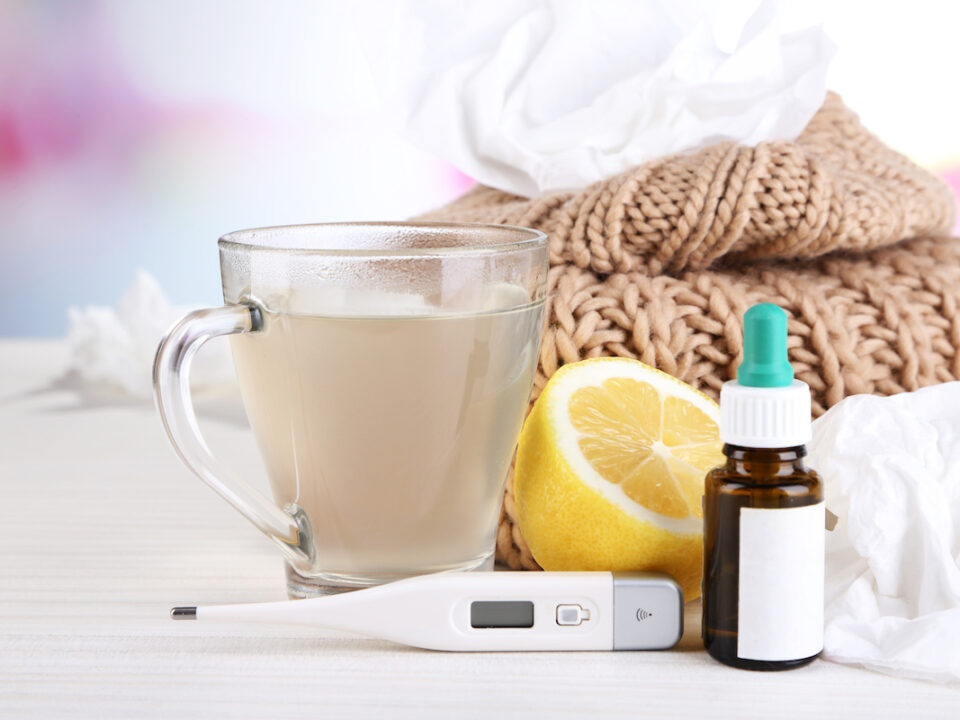Understanding the Different types of Allergies and How to Manage Them

Food allergies, pet allergies, bug bite allergies, oh my! Do you know how many different types of allergies exist on our planet? Whether you are allergic to ragweed, dust, or something else, allergies can make us feel awful.
Allergies are a common condition that occurs when the immune system reacts to a substance that is usually harmless. These substances are called allergens and can include pollen, dust mites, pet dander, and certain foods. When the immune system reacts, it releases chemicals that cause symptoms such as sneezing, itching, and swelling. Allergies affect people of all ages and are very common, with approximately 50 million Americans experiencing some form of allergy each year. Symptoms range from mild to severe, and it’s important to seek medical attention if symptoms are persistent or severe.
Let’s take a look at common allergies and learn ways to treat them from Hillandale Primary Care.
What are the Different Types of Allergies?
Understanding the different types of allergies and how to manage them is crucial for maintaining good health and quality of life. Proper management can reduce the severity and frequency of symptoms, allowing individuals to enjoy their daily activities without disruption. It also helps to prevent potentially life-threatening allergic reactions, such as anaphylaxis, which require immediate medical attention.
There are numerous types of allergies. Below are some of the general/umbrella allergy types and complications you might experience:
- Food allergies: This type of allergy occurs when the immune system overreacts to certain proteins in food, causing symptoms such as hives, swelling, and difficulty breathing. Common food allergens include peanuts, tree nuts, shellfish, milk, and eggs.
- Seasonal allergies: Also known as hay fever, this type of allergy occurs when the body reacts to airborne allergens such as pollen, grass, and mold spores. Symptoms include sneezing, runny nose, and itchy eyes.
- Pet allergies: This type of allergy is caused by exposure to pet dander, saliva, and urine. Symptoms include sneezing, runny nose, and wheezing.
- Insect sting allergies: This type of allergy occurs when the immune system reacts to venom from insect stings. Symptoms can range from mild swelling and itching to life-threatening anaphylaxis.
- Drug allergies: This type of allergy occurs when the immune system reacts to certain medications. Symptoms can range from mild skin rash to severe anaphylaxis.
- Latex allergies: This type of allergy occurs when the immune system reacts to proteins found in natural rubber latex. Symptoms can include skin rash, hives, and difficulty breathing.
- Contact allergies: This type of allergy occurs when the skin comes in contact with certain substances, such as nickel, latex, or poison ivy. Symptoms include redness, itching, and swelling at the site of contact.
Food allergies are caused when the immune system mistakenly identifies certain proteins in food as harmful and triggers a response. The body then releases histamine, which causes symptoms such as hives, swelling, and difficulty breathing.
Seasonal allergies come from exposure to airborne allergens such as pollen, which triggers an immune response that leads to inflammation in the nose and eyes. Furthermore, pet allergies are caused by exposure to pet dander, saliva, and urine. This triggers the release of histamine and causes symptoms such as sneezing and itching.

What are the Symptoms of Allergies?
It’s no secret that allergies can make us miserable. But the symptoms of allergies can vary depending on the type of allergy. For example, food allergies can cause symptoms such as hives, swelling, and difficulty breathing. But seasonal allergies can cause sneezing, runny nose, and itchy eyes.
Pet allergies can cause symptoms such as sneezing and itching, while insect sting allergies can cause mild swelling and itching or life-threatening anaphylaxis.
Here are some common allergy symptoms:
- Sneezing
- Runny or stuffy nose
- Itchy nose, mouth, or throat
- Watery or itchy eyes
- Hives
- Rash
- Swelling, especially of the face, lips, tongue, or throat
- Difficulty breathing or shortness of breath
- Chest tightness or pain
- Nausea or vomiting
- Diarrhea
- Dizziness or lightheadedness
- Fainting or loss of consciousness (in severe cases)
Do You Have Allergies? Here’s How to Find Out
Allergy testing is a way to determine the type of allergy a person has. The testing involves exposing the person to small amounts of potential allergens and monitoring their reaction. The most common types of allergy testing are skin tests and blood tests. Skin tests involve pricking or scratching the skin with a tiny amount of allergen, while blood tests measure the level of allergy-related antibodies in the blood. By identifying the specific allergen that triggers an allergic reaction, allergy testing can help people develop a plan to avoid or manage their allergies.
Some of the common allergy tests include:
- Skin prick test: Involves pricking the skin with a small amount of allergen and checking for a reaction after about 15-20 minutes.
- Intradermal test: Involves injecting a small amount of allergen under the skin to check for a reaction.
- Patch test: Involves applying a patch with potential allergens to the skin and checking for a reaction after about 48 hours.
- Blood test: Measures the level of allergy-related antibodies in the blood to identify potential allergens.
- Elimination diet: Removes potential allergens from the diet and gradually reintroduces them to see if there is a reaction.
- Oral food challenge: Involves eating small amounts of a potential allergen under medical supervision to monitor for a reaction.
- Nasal provocation test: Involves inhaling potential allergens to check for a reaction in the nasal passages.
- Bronchial provocation test: Another test where the patient is inhaling potential allergens to check for a reaction in the lungs.
- Conjunctival provocation test: Involves applying potential allergens to the eye to check for a reaction in the conjunctiva.
How to Manage Your Allergies and Live a Normal Life
Do you wish you can wave a magic wand and make your allergy symptoms disappear? While it’s unfortunately not that easy, there are ways you can manage your allergies. Consider some of the following treatment options
- Antihistamines: Medications that block histamine, a chemical released by the body in response to an allergen, to reduce allergy symptoms like itching, sneezing, and runny nose.
- Decongestants: Medications that reduce swelling in the nasal passages to relieve congestion and improve breathing.
- Steroid nasal sprays: Medications that reduce inflammation in the nasal passages to relieve allergy symptoms like congestion, runny nose, and sneezing.
- Immunotherapy: A long-term treatment that involves exposing a person to small amounts of allergens over time to reduce their sensitivity and build up their tolerance to the allergens. This can be done through allergy shots or sublingual immunotherapy (under-the-tongue tablets).
Immunotherapy, also known as allergy shots, is a long-term treatment option. It’s the process of injecting a patient with small amounts of allergens to reduce their sensitivity over time. This treatment can help alleviate allergy symptoms and improve overall quality of life for those with allergies.
To avoid triggers and prevent allergic reactions, it is important to identify the allergens that trigger your symptoms and try to avoid them. This may involve making changes to your environment. For example, consider using air filters or avoiding certain foods, as well as taking medications or undergoing immunotherapy to reduce your sensitivity to the allergens.
Get Help with Different Types of Allergies from Hillandale Primary Care
If you suspect that you have an allergy, it is important to seek medical advice from a qualified healthcare provider. Allergies can be serious and even life-threatening in some cases, so it is crucial to get a proper diagnosis and treatment plan. With the right care and management, you can reduce your symptoms and enjoy a better quality of life.
When you need help identifying or treating allergies, get in touch with us today at Hillandale Primary Care.



